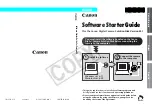
VMware, Inc.
127
Chapter 7 VMware vSphere Platform Operations
Example 7-14.
Repair a Host
Request:
POST http://vcloud.example.com/api/v1.0/admin/extension/host/1/action/repair
Response:
202 Accepted
Content-Type: application/vnd.vmware.vcloud.task+xml
...
<Task ... >
...
</Task>
Upgrade a Host Agent
New
releases
of
vCenter
Cloud
Director
may
include
a
new
version
of
the
host
agent.
A
system
administrator
can
upgrade
the
host
agent
on
a
host
to
the
version
included
in
the
current
installation
of
Cloud
Director
by
making
a
POST
request
to
the
host’s
action/upgrade
URL.
Example 7
‐
15
upgrades
the
host
agent
for
the
host
referenced
by
http://vcloud.example.com/api/v1.0/admin/extension/host/1.
Example 7-15.
Upgrade a Host Agent
Request:
POST http://vcloud.example.com/api/v1.0/admin/extension/host/1/action/upgrade
Response:
202 Accepted
Content-Type: application/vnd.vmware.vcloud.task+xml
...
<Task ... operation="Upgrading Host (1)" ...>
...
</Task>
Create a Provider vDC
An
VMWProviderVdc
is
an
extended
representation
of
a
ProviderVdc
object.
It
includes
elements
that
allow
a
system
administrator
to
specify
resources
such
as
datastores
and
resource
pools
provided
by
a
vCenter
instance
registered
to
the
vCloud.
Only
a
system
administrator
can
view
or
modify
a
VMWProviderVdc
.
An
organization
administrator
or
other
privileged
user
can
examine
all
other
properties
of
a
provider
vDC
(see
“Examine
the
Contents
of
a
Provider
vDC”
on
page 103).
After
a
system
administrator
creates
a
VMWProviderVdc
,
it
becomes
visible
as
a
member
of
the
ProviderVdcReferences
element
of
a
VCloud
.
See
“Get
an
Administrative
View
of
a
Cloud”
on
page 93.
A
system
administrator
can
use
the
rel="add"
link
for
providervdcs
in
a
VMWExtension
body
to
add
a
provider
vDC
to
a
vCloud.
Example 7
‐
18
does
this
by
making
a
POST
request
to
the
providervdcs
link
returned
in
Example 7
‐
1
.
To
retrieve
the
values
you
need
for
the
DataStoreRefs
and
ResourcePoolRef
elements
in
the
request
body,
start
by
listing
the
vCenter
Servers
registered
to
this
vCloud
(see
“List
vCenter
Servers
Registered
to
a
vCloud”
on
page 120),
then
GET
one
of
the
vCenter
Server
URLs
listed
in
the
response.
The
result
is
a
VimServer
element,
as
shown
in
Example 7
‐
16
.
Summary of Contents for VCLOUD API 1.0 - TECHNICAL NOTE
Page 10: ...vCloud API Programming Guide 10 VMware Inc...
Page 20: ...vCloud API Programming Guide 20 VMware Inc...
Page 32: ...vCloud API Programming Guide 32 VMware Inc...
Page 90: ...vCloud API Programming Guide 90 VMware Inc...
Page 150: ...vCloud API Programming Guide 150 VMware Inc...
Page 170: ...vCloud API Programming Guide 170 VMware Inc...
















































